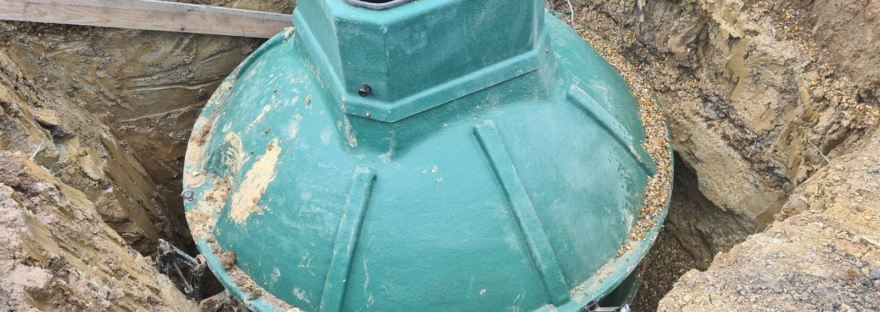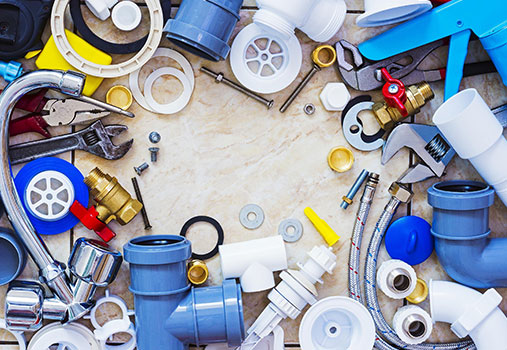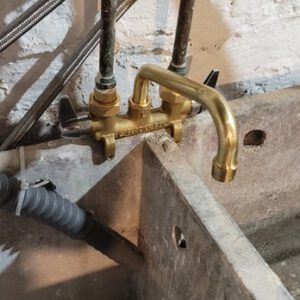A septic system treats wastewater for homes not connected to city sewer systems. Wastewater comes in from toilets, showers, sinks and drains. Heavy solids sink to the bottom, where bacteria break them down into sludge. Lighter solids, like fats and oils, float to the top. Effluent water is released to a soil dispersal area or drain field. Go to https://www.septictankarmadale.com.au/ for more details.
The Tank

The septic tank is an underground watertight box that holds and treats wastewater from a home. It is usually made from concrete, fiberglass, fiber-reinforced plastic or high-density polyethylene (HDPE). It should be large enough to retain all of the raw sewage and allow for some decomposition of solid waste and anaerobic digestion. It is typically about eight feet long, four feet wide and five feet deep.
When waste flows into the septic tank, it separates into three forms; Sludge, scum and effluent. Solid waste particles sink to the bottom forming sludge, fats and grease float to the top forming scum, and the liquid middle layer of wastewater is known as effluent. The septic tank contains billions of bacteria that perform the first stage of treatment by breaking down solid waste and digesting it.
Effluent is pumped out of the tank through a pipe called the drain field or absorption field. It is then dispersed into the soil through perforated pipes that extend underground. The soil acts as a natural filter and further breaks down the septic tank effluent, completing the treatment process.
To prevent the pump from being overworked and possibly damaging your septic system, it is important that the septic tank is emptied regularly. It is recommended that a home with a septic tank be pumped every two to three years. It is also necessary to keep the septic tank lid closed, as leaving it open can cause a backup of waste into a home.
The septic tank should be located in a low area of the yard away from buildings, play areas and driveways. Covering the drain field with a driveway or parking lot, or using the area for storage can cause serious damage to the tank and the absorption system. In addition, excessive rainfall or snowmelt can flood the drainage field and interfere with the system’s operation. This can also cause groundwater to flow back into the septic tank. This can also cause the system to overflow and fail. Therefore, it is a good idea to install a rainwater collection system to reduce the chance of excess water infiltrating the drain field and septic tank.
The Drain Field
The septic tank links to the drain field, also known as a leach field, through a pipe. A septic drain field is usually found in a flat, open area of your yard. A drain field consists of multiple trenches, 18 to 36 inches deep, one to three feet wide and about 100 feet long. A well-maintained drain field can last up to 30 years.
Wastewater that leaves the septic tank flows to the drain field through a watertight 4-inch diameter pipe. During this process, solids sink to the bottom of the tank forming sludge and oil and grease float to the top of the tank forming scum. An outlet baffle prevents sludge and scum from exiting the tank into your absorption field. The liquid wastewater that exits the septic tank is called effluent.
Once the wastewater reaches the drain field, it seeps into soil through perforated pipes. The soil acts as a physical, chemical and biological filter to remove pathogens and other contaminants from the effluent. A poorly maintained or damaged drain field allows harmful bacteria and chemicals to seep into groundwater and natural bodies of water, affecting the quality of drinking water at homes, businesses and even livestock.
Your septic tank’s drain field must be free of obstructions to allow it to function properly. Adding plants to the drain field can block its pores and cause it to fail. Covering the drain field with a driveway or storage building can also impair its performance.
Preventative maintenance is the key to extending the lifespan of your septic system and the drain field. Avoid pouring solids like paints, varnishes, thinners, waste oil, photographic solutions, detergents, pesticides, antibiotic drugs and animal feces into your septic system.
If you see signs that your septic system is not functioning well, such as sewage backups into your home or standing water over the drain field, call a professional immediately. It may be that the drain field is nearing the end of its life and needs to be replaced. A septic tank expert can inspect the entire septic system to determine the best solution.
The Distribution Box
Septic systems are used to treat wastewater that flows out of residential plumbing. When the system is working properly, it takes care of a large percentage of the wastes that flow from household plumbing. Heavy solids settle to the bottom of the tank where they are digested by bacteria into sludge. Lighter solids, like fats and oils, float to the top of the liquid wastewater, where they partially decompose into a layer of scum. This mixture of partially treated wastewater is then released into the absorption field.
The septic distribution box (also known as the D-box) is a concrete cube that sits below the septic tank and is connected to a network of drain field absorption trenches or pipes. It uses gravity to receive the wastewater from the septic tank and to distribute it to the drain fields.
In order to function correctly, the septic distribution box needs to be in good condition. It should also be well-installed. It should be installed based on the manufacturer’s specifications and it should be set no more than a foot below ground level. It should be placed on a bed of sand or pea gravel. This will help prevent frost action and movement once it is in place.
The distribution box is designed to evenly distribute the wastewater into the drain field. This helps to prevent overloading one section of the absorption field with too much wastewater, which can cause it to fail prematurely. It’s important to have your septic system inspected regularly and have any problems repaired as soon as possible.
Symptoms of a failing distribution box include a sewage backup in the drain field, strong odors and standing water around the septic tank. If you suspect you have a problem with your septic system, contact us to schedule a service.
Getting your distribution box checked and repaired as soon as you notice problems could save you costly repairs and even replacement costs. Having it inspected and pumped on a regular basis can help you avoid serious damage to your septic system and protect your property from hazardous contaminants.
The Pump
A septic tank pump is one of the most important parts of your septic system. This is because if the septic tank’s pump fails, you will not have wastewater pumped out of the tank and into the drainage area. The septic tank’s pump is activated by a control panel, or float switch (also called a water level detector). As the wastewater in the tank rises to a certain point, the float switch turns on the pump, causing it to discharge the wastewater into the drainage area. This process is repeated until the float switch is turned off again, signaling that the tank is empty.
The septic tank is a water-tight container that collects and holds all wastewater that drains from a home’s plumbing. It is designed to hold the waste long enough that heavy solids settle to the bottom and form sludge. Fats and grease, which are lighter than water, float to the top of the septic tank and decompose. This leaves a clear liquid known as effluent. The septic tank’s compartments and a T-shaped outlet prevent sludge and scum from exiting the tank and traveling into the drain field.
Septic tanks are used in homes and other buildings where a municipal sewer plumbing system is unavailable or impractical. This includes rural areas, homes and businesses that are too far from a public sewer system, or sites with soil conditions that would not support sewer lines.
During the septic tank’s treatment process, bacteria, which live within the tank and digest wastes, separate the solids from the liquid wastewater. Eventually, the bacteria-laden wastewater flows out of the septic tank and into the drain field for further treatment.
The drain field is a shallow area of bare soil that filters the effluent through rocks, dirt and sand to naturally purify the water. It also allows the water to seep through the soil and re-enter underground aquifers.
The septic tank’s distribution box links the septic tank to the drain field by distributing wastewater through pipes that are buried in the ground. The pumps in the distribution box ensure that each pipe receives an equal amount of wastewater so that no part of the absorption field is overloaded. A septic tank can have several distribution boxes depending on the size of the home and the number of bathrooms.





